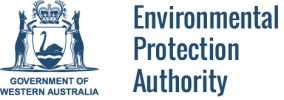A magnetite iron ore mine expected to operate for 45 years has been recommended for stringent conditional approval by the Environmental Protection Authority. (EPA Report 1514)
The large open-cut mine proposed by Fortescue Metals Group Iron Bridge (Aust) Ltd (FMGIB) will be located 110 kilometres south-southeast of Port Hedland and will generate up to 15 million tonnes of magnetite each year.
The proposal also includes the construction of associated infrastructure as well as the transport of magnetite ore to Port Hedland for export via a slurry pipeline.
EPA Chairman Dr Paul Vogel said the proposal had been examined at a Public Environmental Review, the highest level of environmental impact assessment.
The EPA assessed the proposal against several key environmental factors, namely Flora and Vegetation, Terrestrial Fauna, Subterranean Fauna, Hydrological Processes and Inland Waters Environmental Quality and Offsets.
Dr Vogel said the extensive assessment had found the proposal could be managed to meet the EPA’s objectives for each of these factors subject to a suite of strict conditions.
“This is a large mine with a long life expectancy so the EPA has recommended seventeen rigorous conditions to minimise and mitigate any potential environmental impacts,” Dr Vogel said.
Dr Vogel said the conditions included management plans to ensure construction avoided Declared Rare Flora, Priority 1 Listed Flora species such as the Pityrodia sp. Marble Bar and Threatened Ecological Communities where practical.
“The EPA has also recommended the implementation of the proposal does not affect the viability of the Pilbara Leaf-nosed Bat through a Mine Exclusion Zone around a regionally significant roost cave,” Dr Vogel said.
“Mine construction and operational activities will also need to ensure that impacts to the Northern Quoll will be minimised. Fauna-rescue personnel will also be required to clear trapped fauna in open trenches at least twice daily.”
With the proposal requiring abstraction of up to 14 gigalitres a year of groundwater sourced from the Canning Basin, other conditions include the preparation of a Water Quality and Quantity Monitoring Plan, in consultation with the Department of Water, to ensure the proposal does not have a detrimental impact on a nearby water pool.
Dr Vogel said the proposal would result in the clearing of 5,141 hectares of native vegetation. For this reason, the EPA had also recommended the proponent contribute funds to a government-established conservation offset fund to mitigate for significant residual impacts on vegetation deemed to be in ‘good to excellent’ condition, estimated to cover more than 4,700 ha.
The EPA’s report to the Minister for Environment is now open for a two-week public appeal period. Appeals close July 7, 2014 and can be made at www.appealsconvenor.wa.gov.au
Appeals are administered by the Appeals Convenor and determined by the Minister for Environment. A decision on implementation of the proposal is made by the Minister on the basis of the EPA’s advice and in consultation with other Ministers or decision-making authorities.
This proposal is also being assessed under a bilateral agreement with the Commonwealth.
EPA Report 1514 is available at www.epa.wa.gov.au
Media Contact: Nadia Miraudo 0400 866 450
